Sir WIlliam Gage
In 1895, Sir William Gage and his associates wanted to establish the first tuberculosis sanitarium of it’s kind in Canada. After visiting TB sanitariums in Europe and America, the philanthropist Gage had an idea that Canada should have its own TB sanitarium.
Gage, who grew up in Brampton, Ontario was the wealthy president of W.J. Gage Publishing. He approached the city of Toronto with a $25,000 contribution to help build a TB sanitarium. The city turned down his offer partly due to fears associated with such a TB facility. At the time it was believed that TB was a poor man’s disease and hereditary.
After the City of Toronto turned down Gage’s offer, the Town of Gravenhurst made an offer of a $10,000 towards the National Sanitarium Association to support the construction of a TB hospital. Gage contributed an amount of $25,000. Mr. Hartland Massey contributed $25,000 and Mr. William Christie contributed $10,000.
A businessman from Kamloops, British Columbia made an equally tempting offer – free train rides to the BC facility if the sanitarium were to be built in British Columbia instead.
It was decided to construct the sanitarium in Gravenhurst on the shore of Lake Muskoka. The weather, the lake, the open air would be ideal for patients. It was also ideally located away from rural living.
The National Sanitarium Association was formed in 1896 to collect and administer funds for the creation of a Canadian sanitarium. The president of the NSA was Sir Donald Smith (Lord Strathcona) and the secretary was William Gage. The association had two purposes: to build sanitariums and to fund research.
With funding secured, construction commented. On July 13, 1897 the Muskoka Cottage Sanitarium, Canada’s first TB sanitarium opened. The MCS accepted paying patients and conditions were similar to that of staying in a resort. The fee was $6 per week with the average stay being 98 days.
Patients had plenty of rest, recreation and good food.
Muskoka Free Hospital for Consumptives
The NSA Board of Directors felt that poor people deserved treatment as well. In 1902 the Muskoka Free Hospital for Consumptives opened on the same grounds, the first free hospital in the world. Consumption was the term for tuberculosis at the time.
When the MFHC burnt down in 1920, it was replaced with a new building named after Sir William Gage who had recently passed away.
Muskoka Sanitarium Admin Building
In 1920 expansions were made to the Muskoka sanitarium to increase patient capacity to 444 beds. Buildings were constructed to allow surgeries, a laboratory, service buildings and homes for the professionals that worked at the Muskoka Cottage Sanitarium.
By 1934 there were twelve sanitariums across Canada.
A Medical Breakthrough
With the discovery of streptomycin in 1944, the need for traditional isolation lessened. This led to a decline in the number of patients during the 1940’s to 1950’s. In 1960 the site became a housing and care facility for development challenged individuals.
The site became known as the Muskoka Centre.
Conditions at Muskoka Centre were poor. There were too few staff and too many patients. Several patients suffered abuse at the hands of employees. A 1985 inquiry into conditions at the Muskoka Centre found that residents were not receiving adequate care.
A $36 million class-action lawsuit was filed on behalf of patients who had been at twelve residential care facilities in Ontario. For patients of the Muskoka Centre the class-action covered those who’d been residents between August 28, 1973 and June 30, 1993.
The Muskoka Centre was finally closed in 1994.
Present Day
The Muskoka Sanitarium property has sat dormant since that time. Every winter the inside stairs coat with slippery ice as more mold accumulates inside. The water pipes have burst due to the cold Northern Ontario winters. People tear boards off the windows, Infrastructure Ontario replaces them.
The location has seen increased foot traffic from urban explorers. In July of 2017 a media campaign was released to discourage people from trespassing on the ground. Fifty people had been charged with trespass in that year alone.
Don’t be surprised if you’re caught here. The OPP use the grounds for police dog training.
Gravenhurst Town Council would like to see the property sold. Potential buyers Maple Leaf Education Systems and Knightstone Capital Management, would like to redevelop the property.
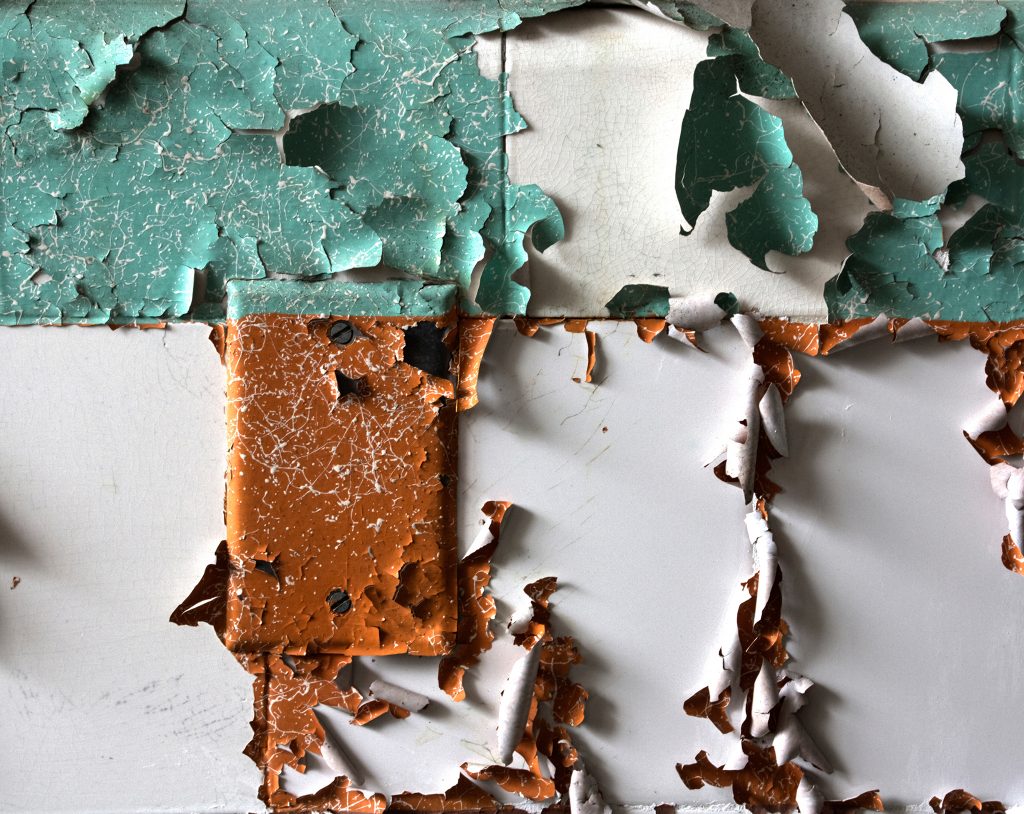
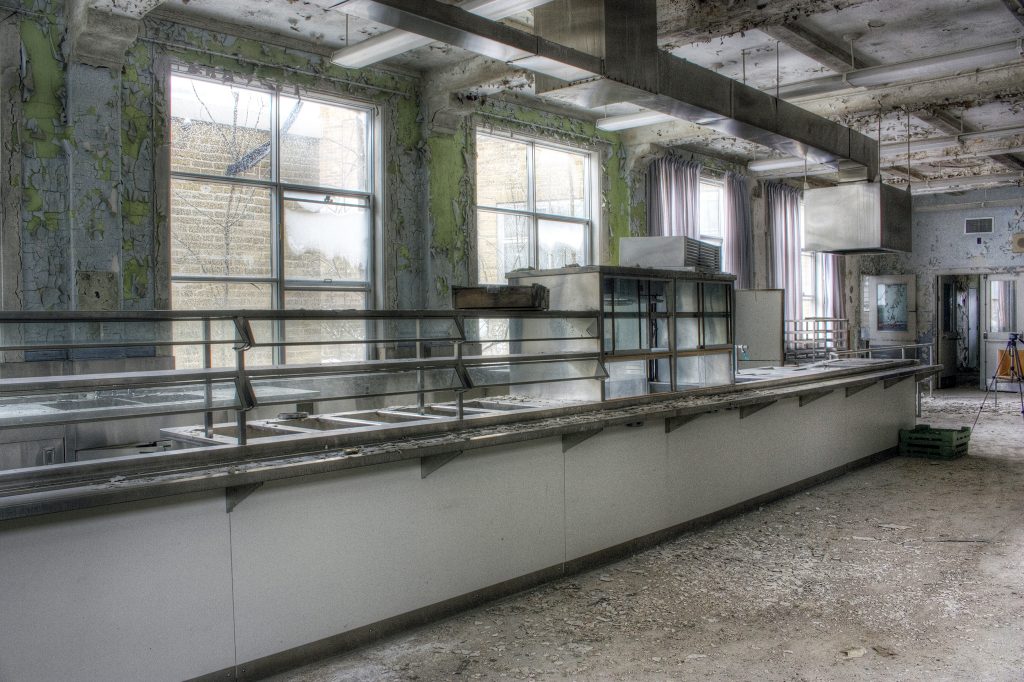
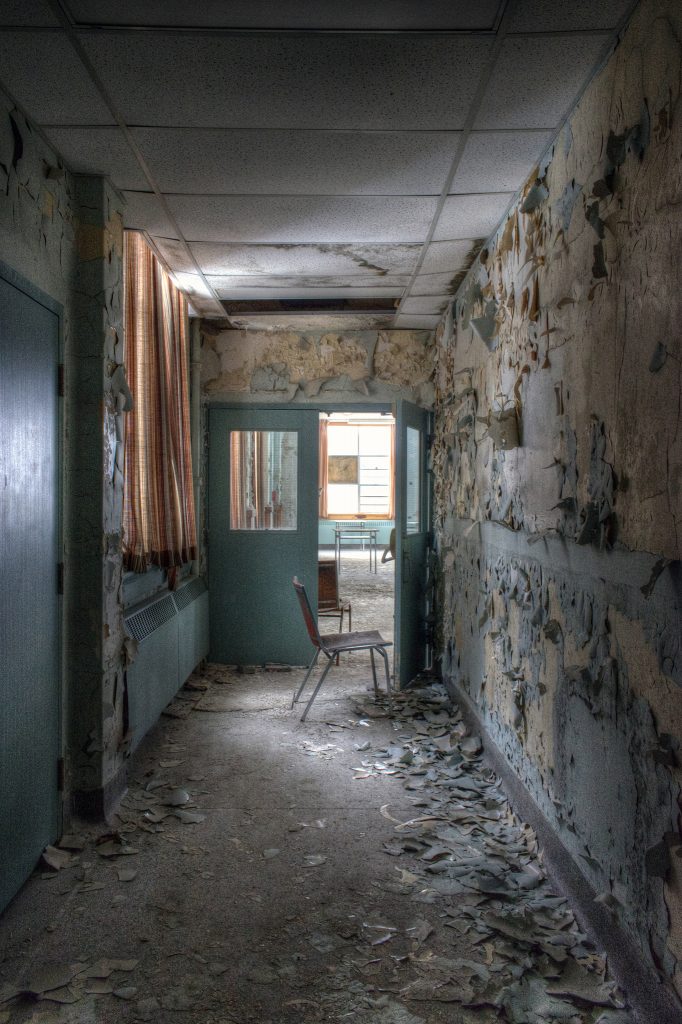
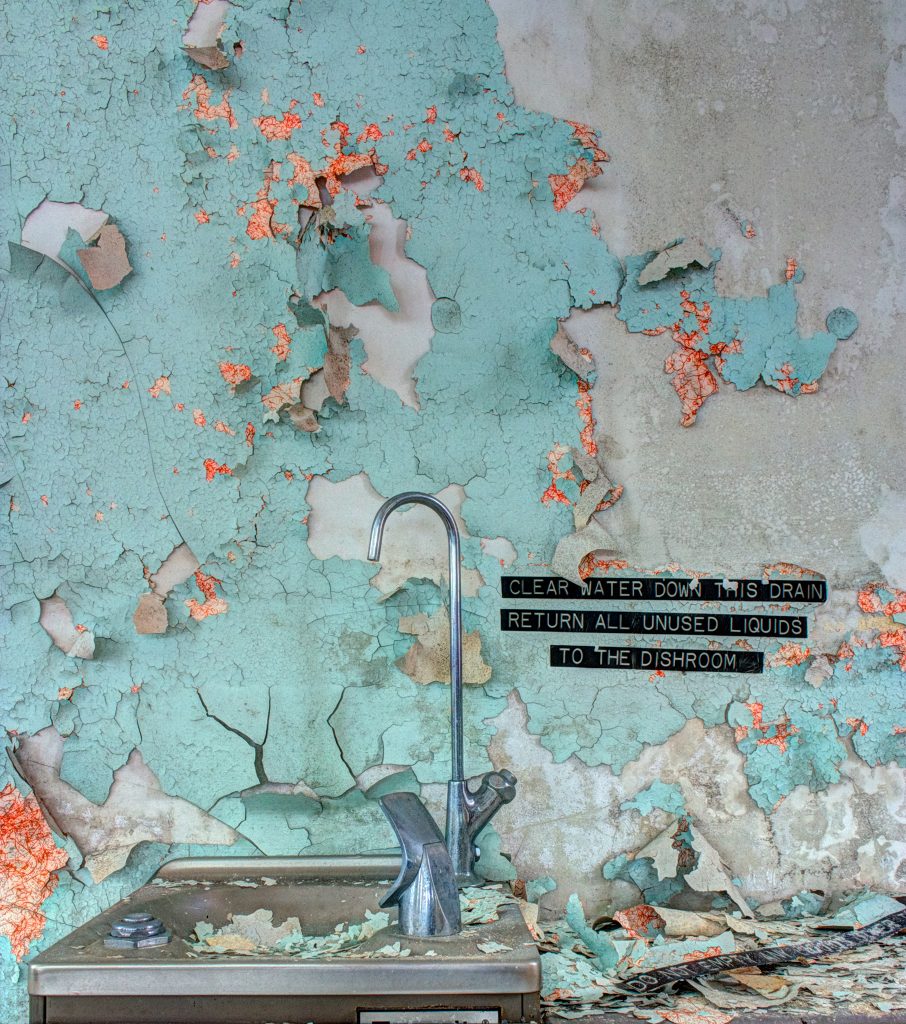
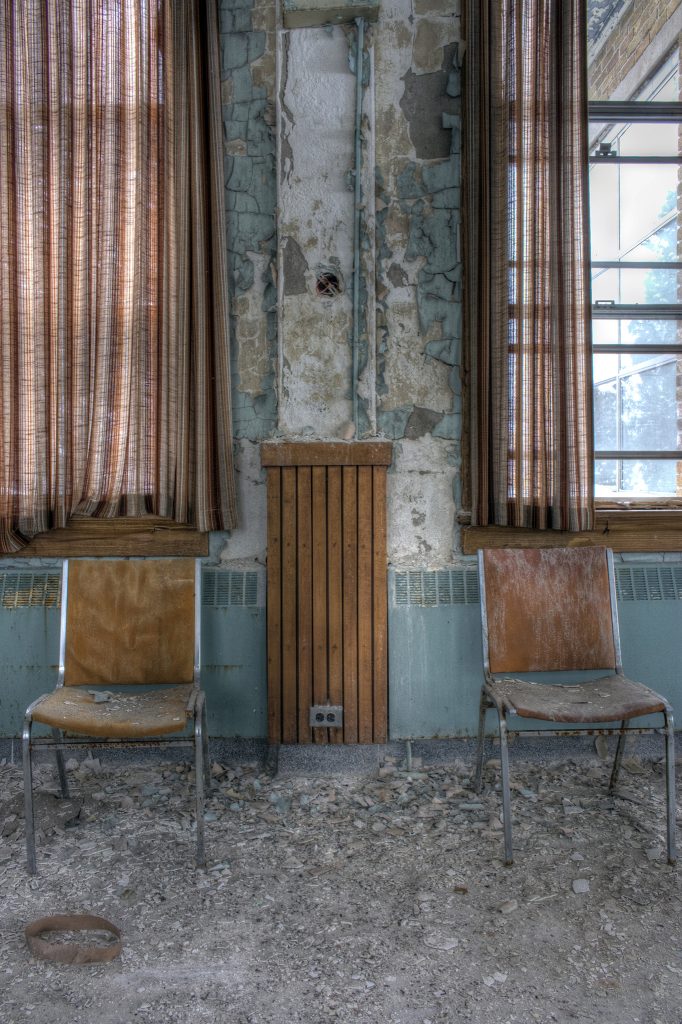
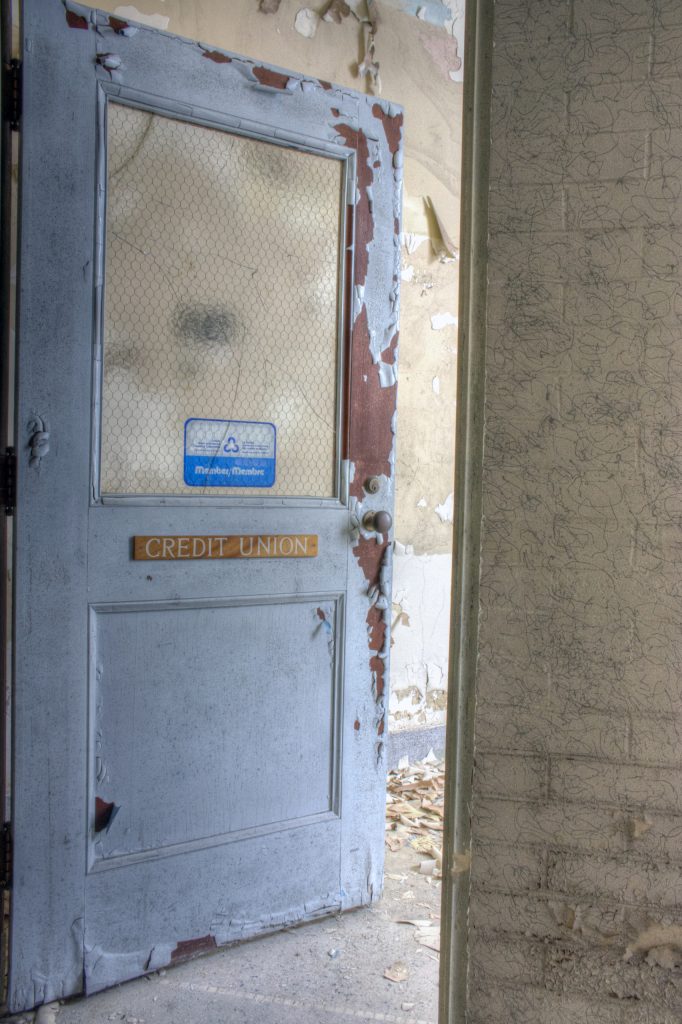
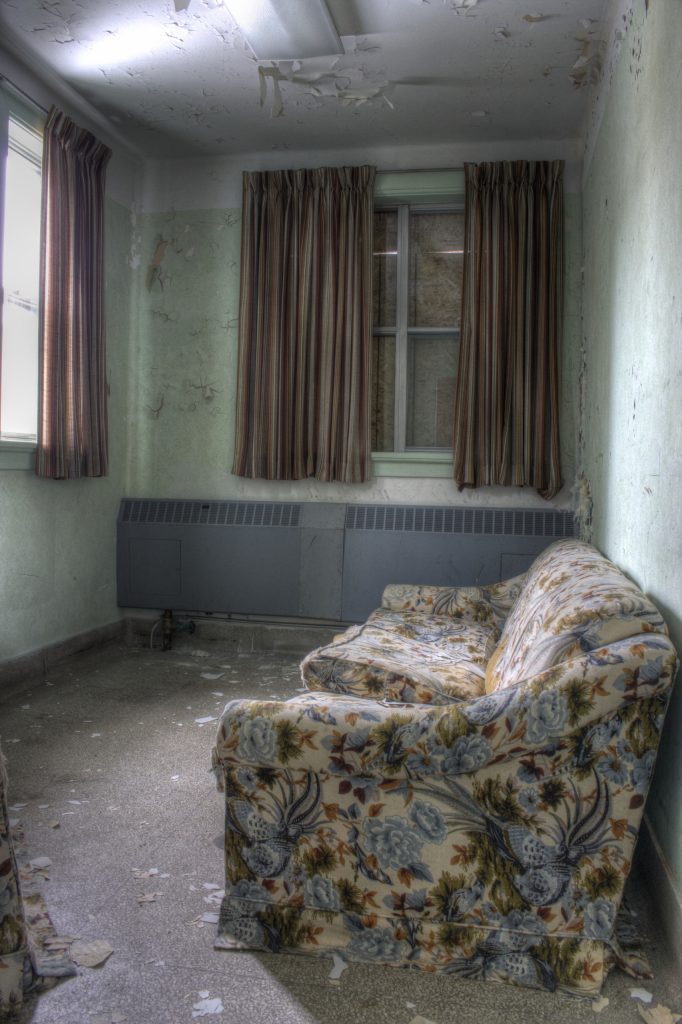
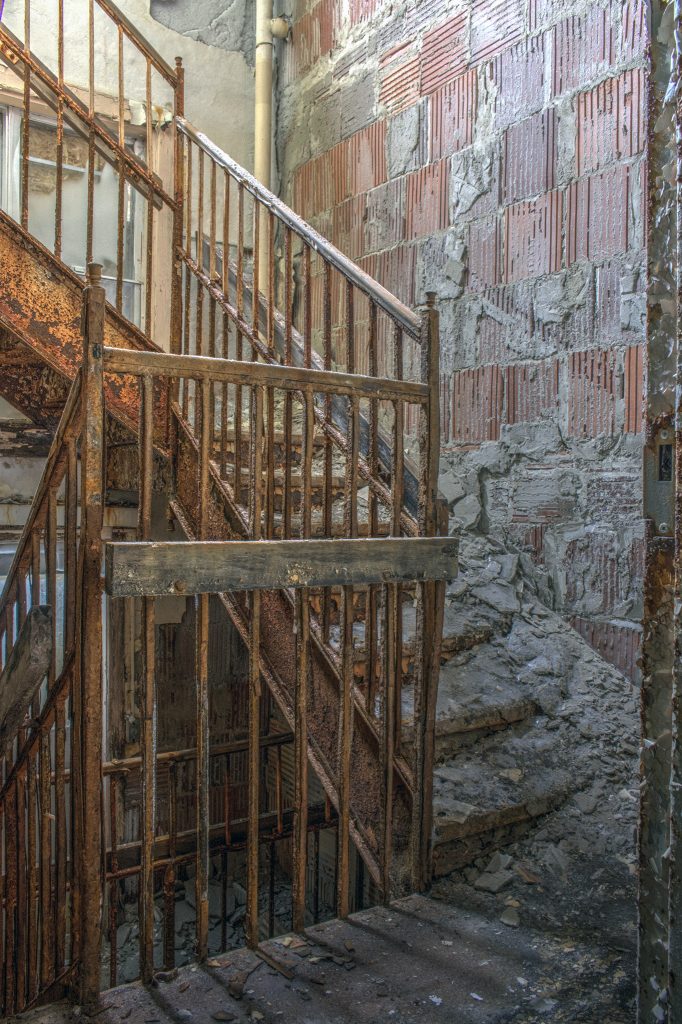
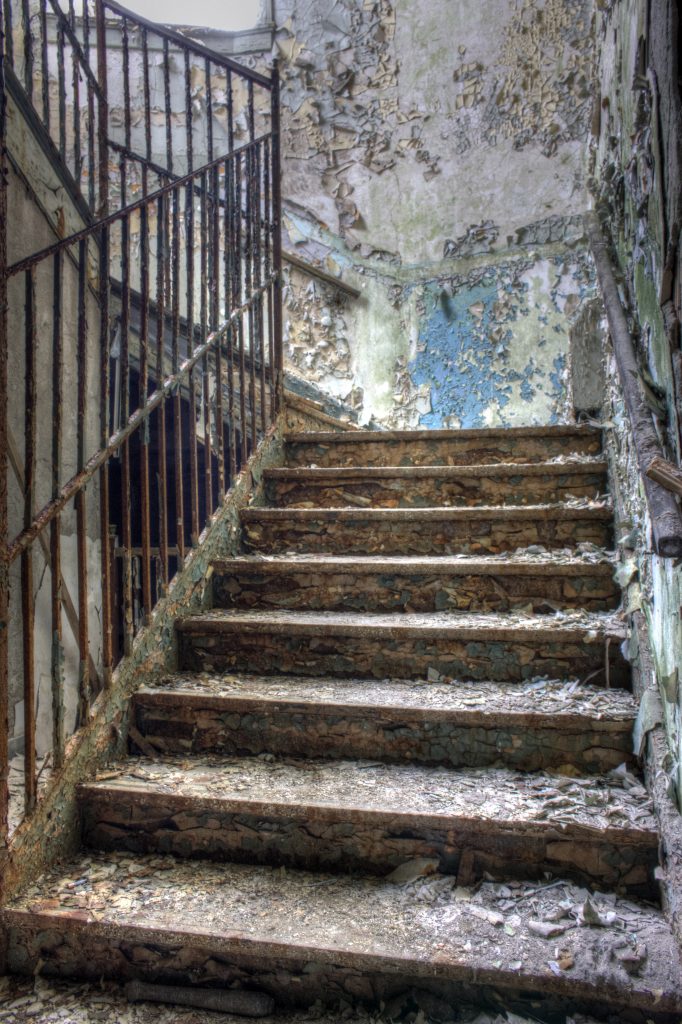
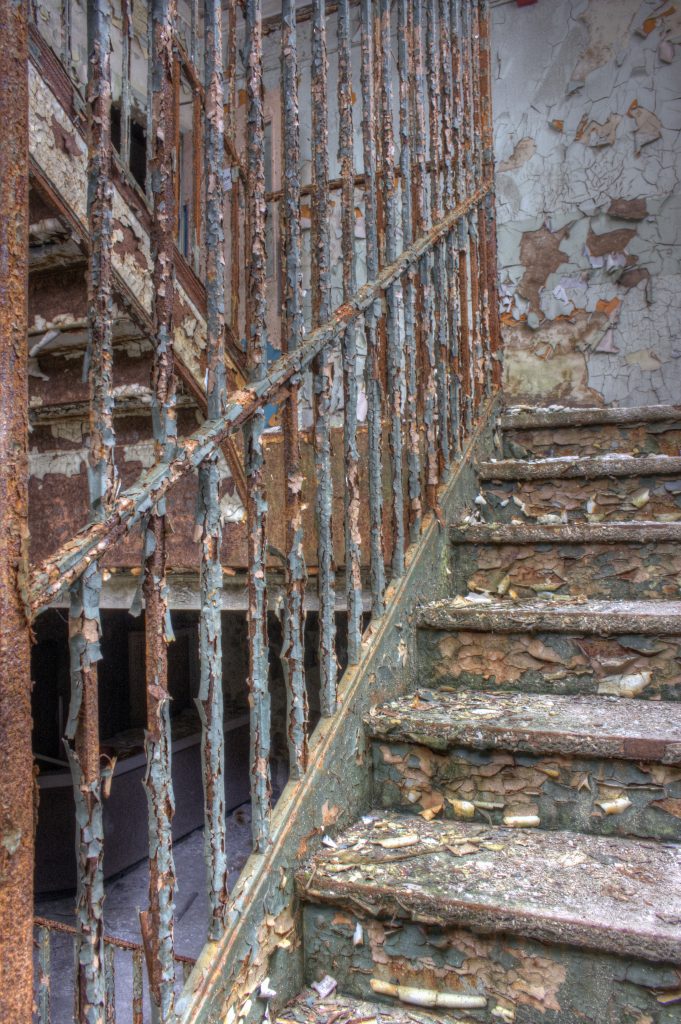
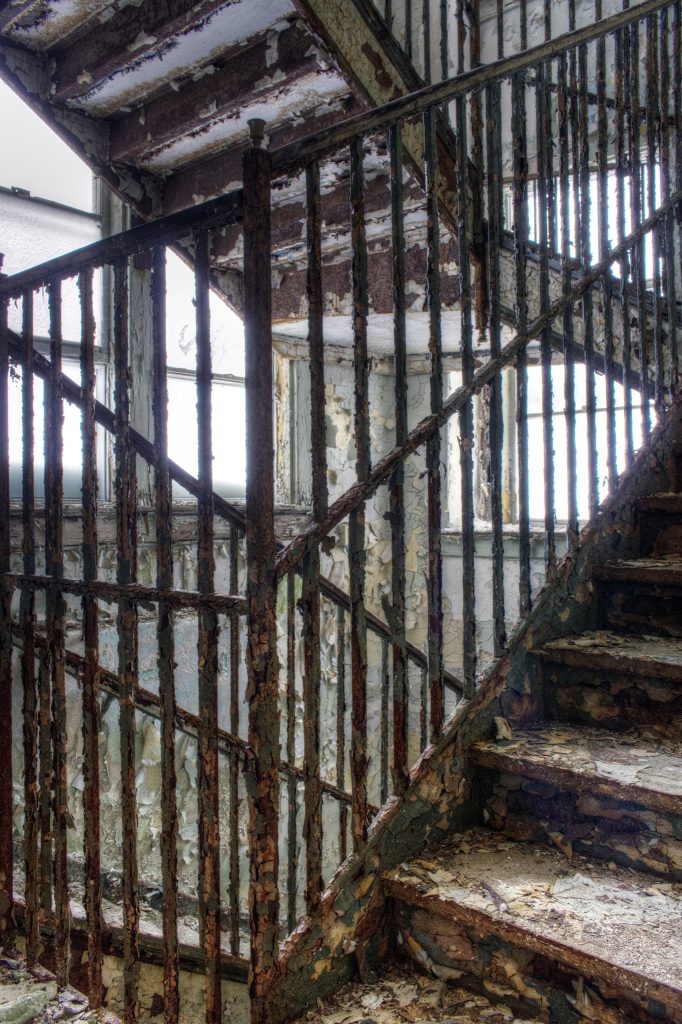
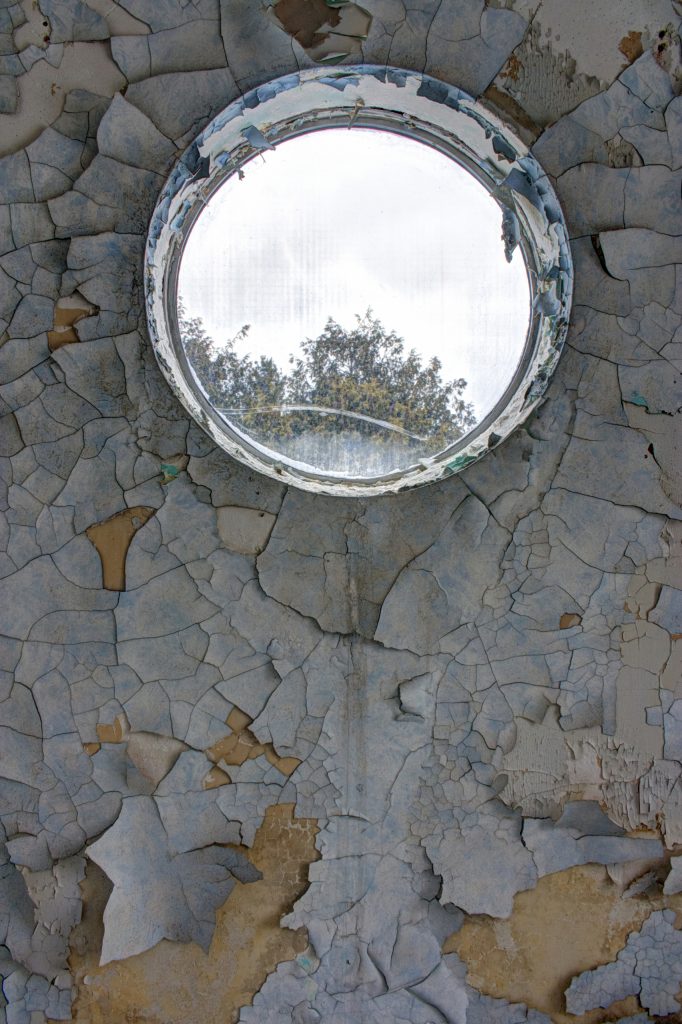
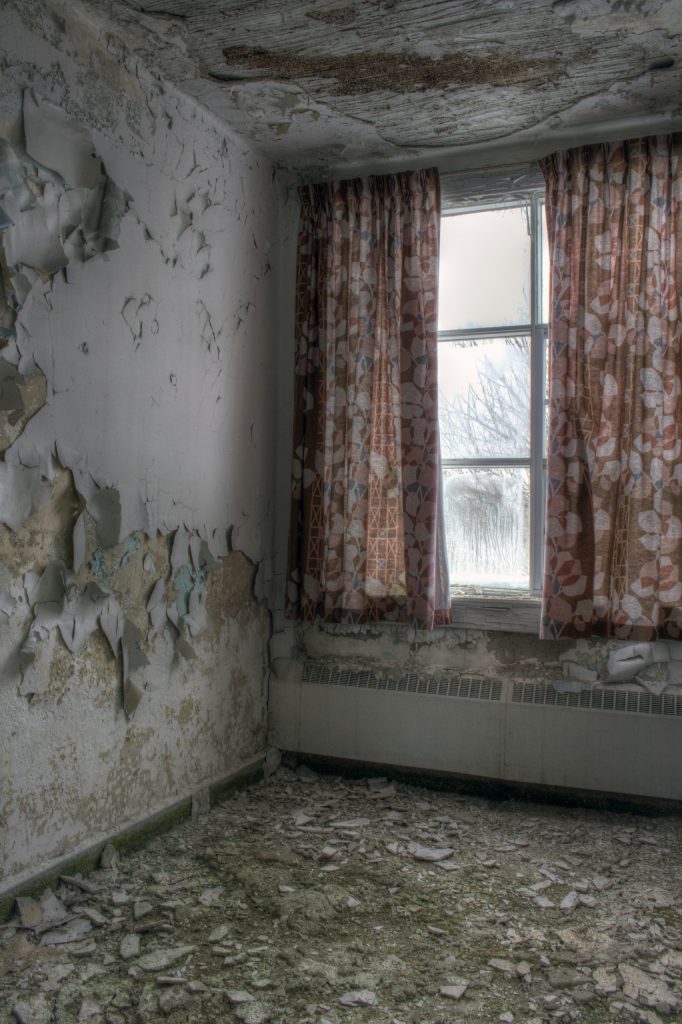
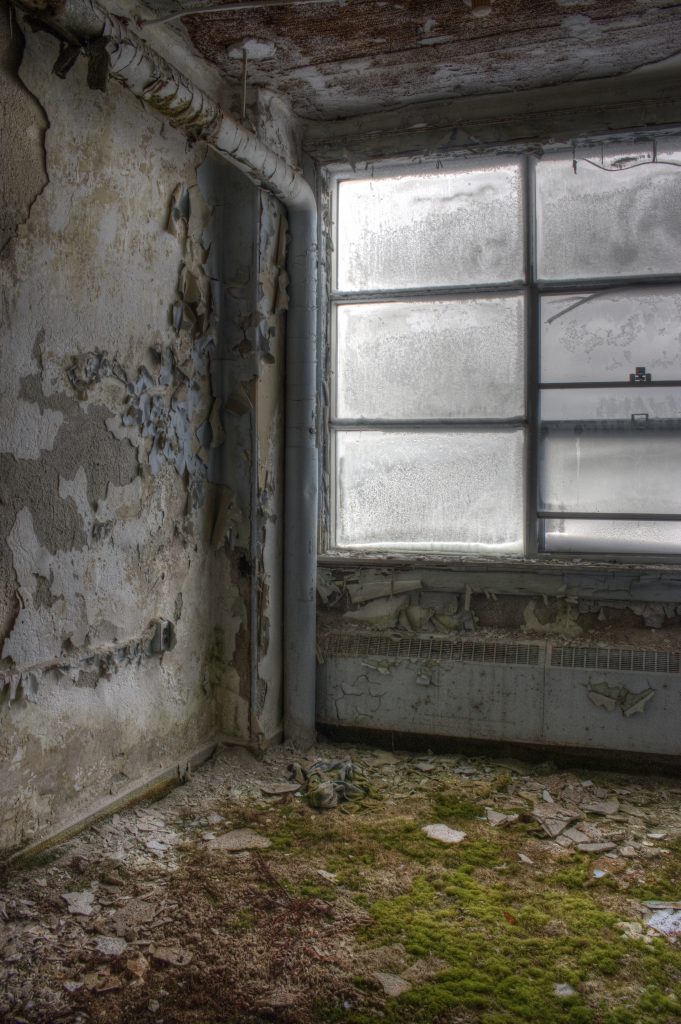
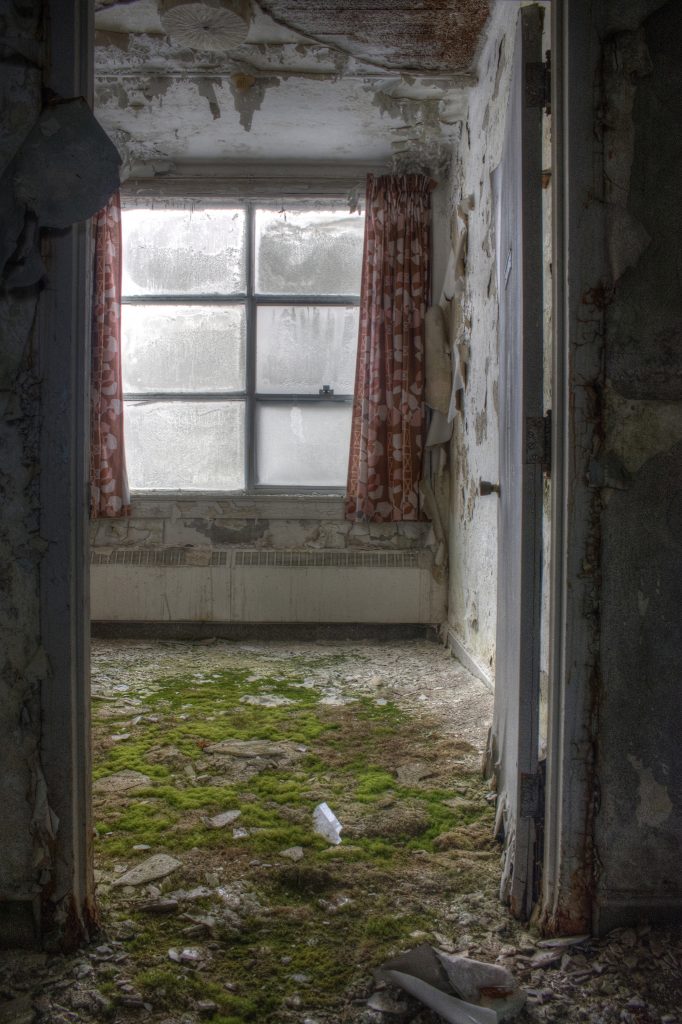
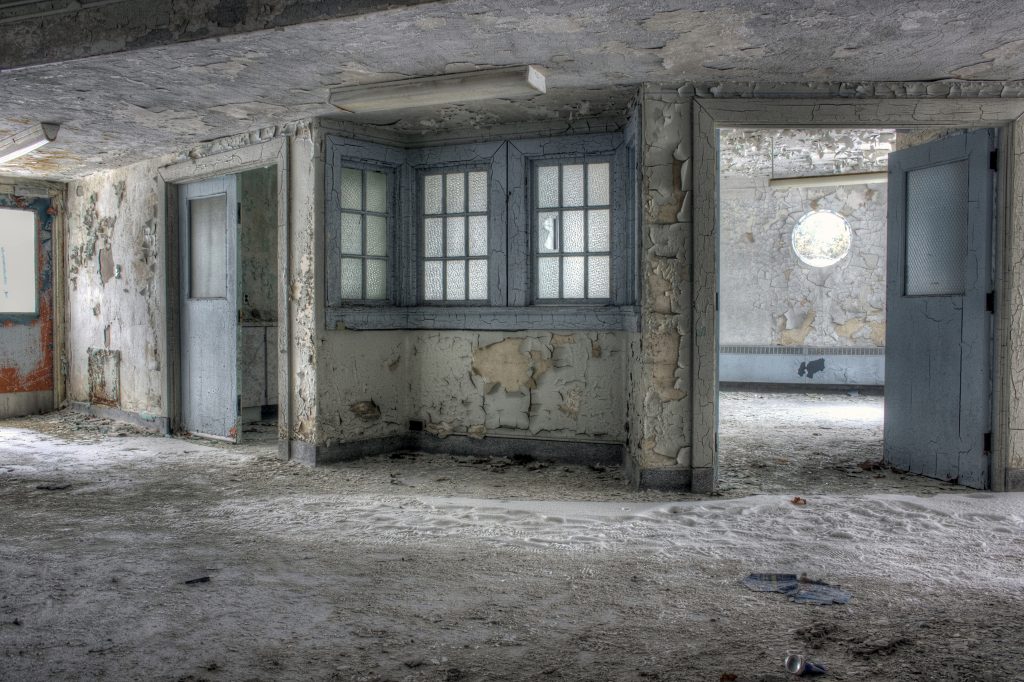
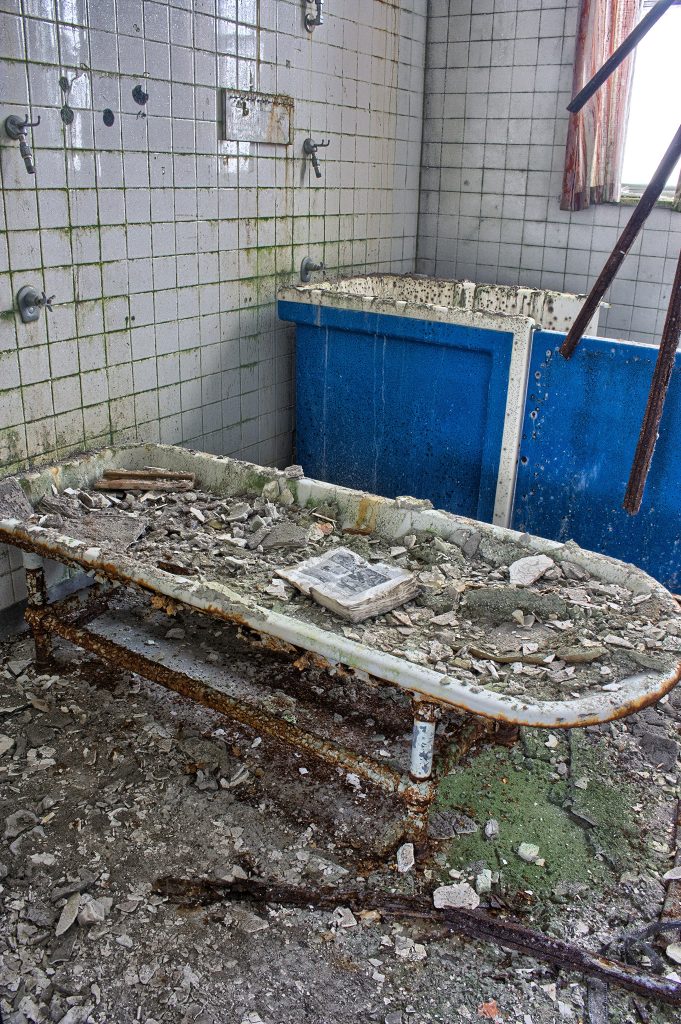
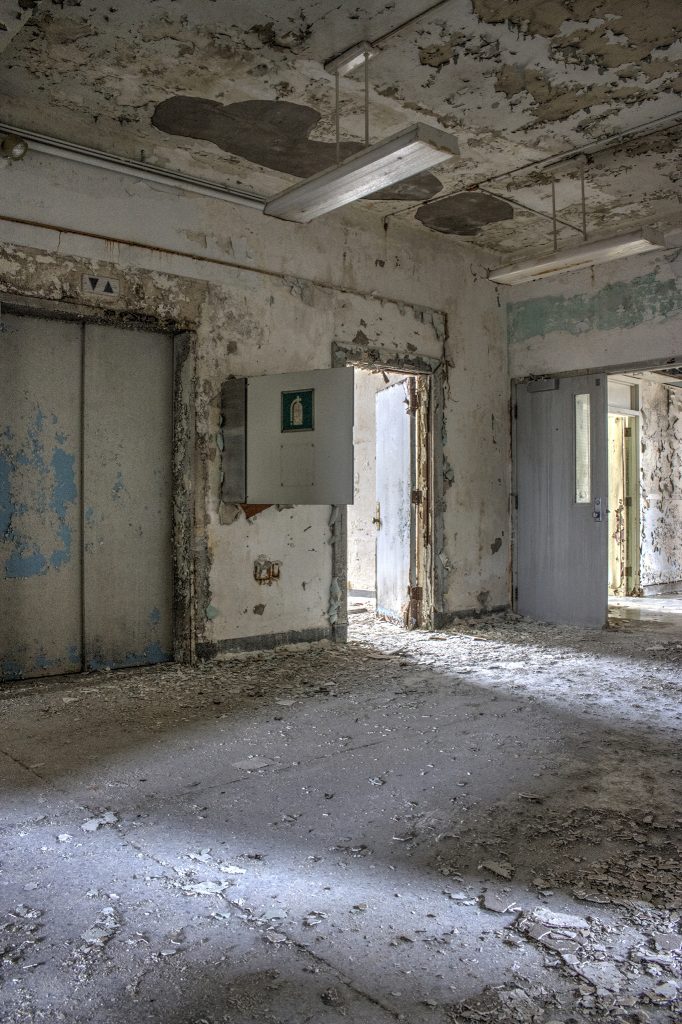
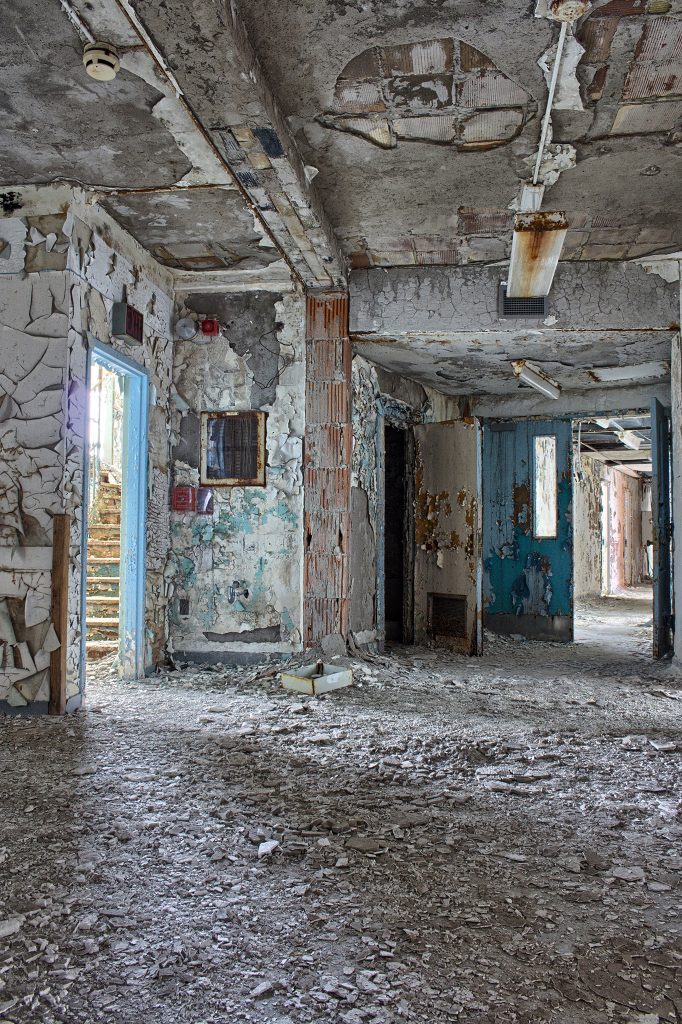
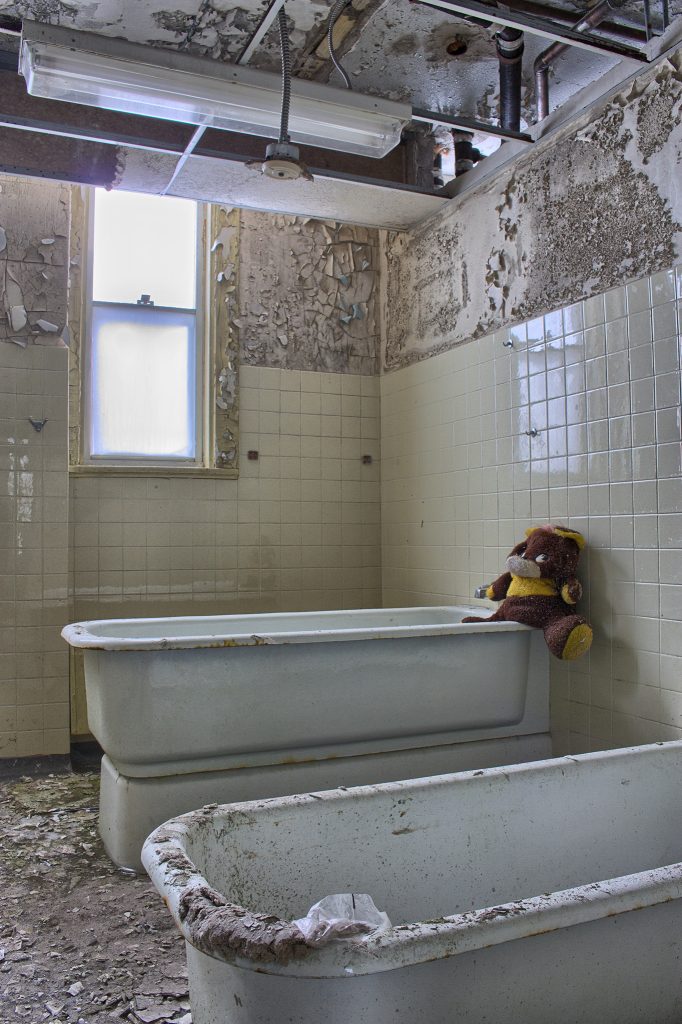
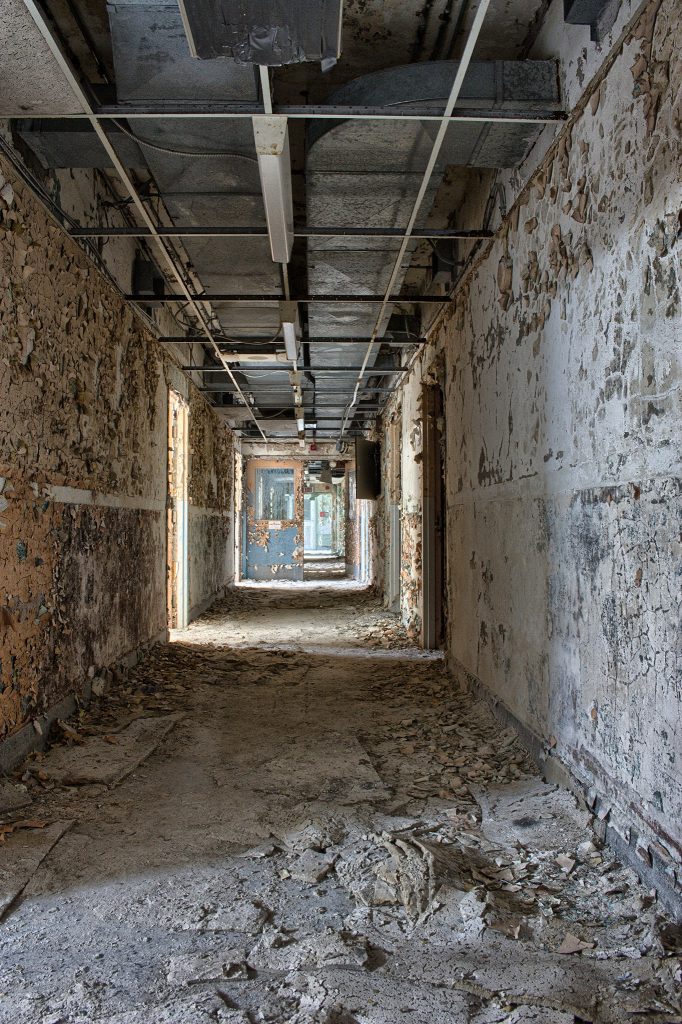
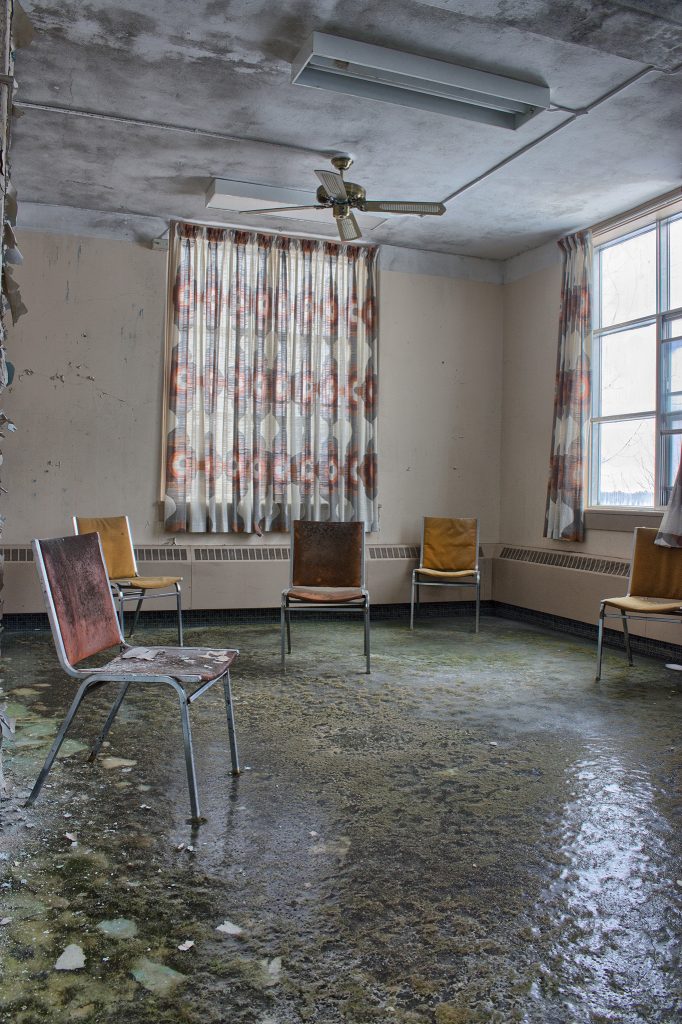
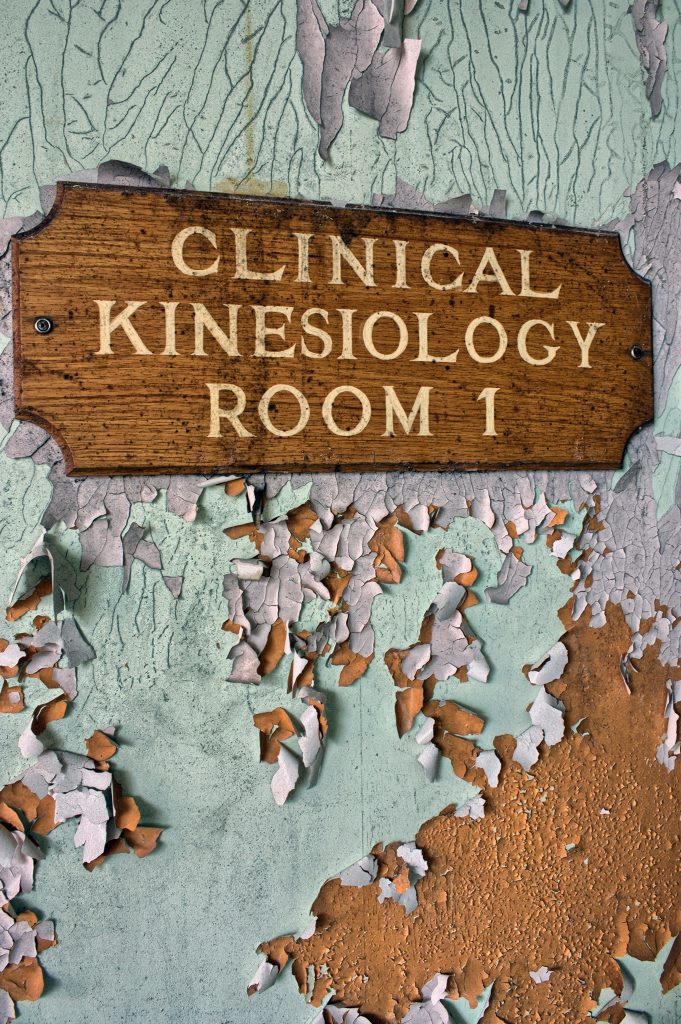
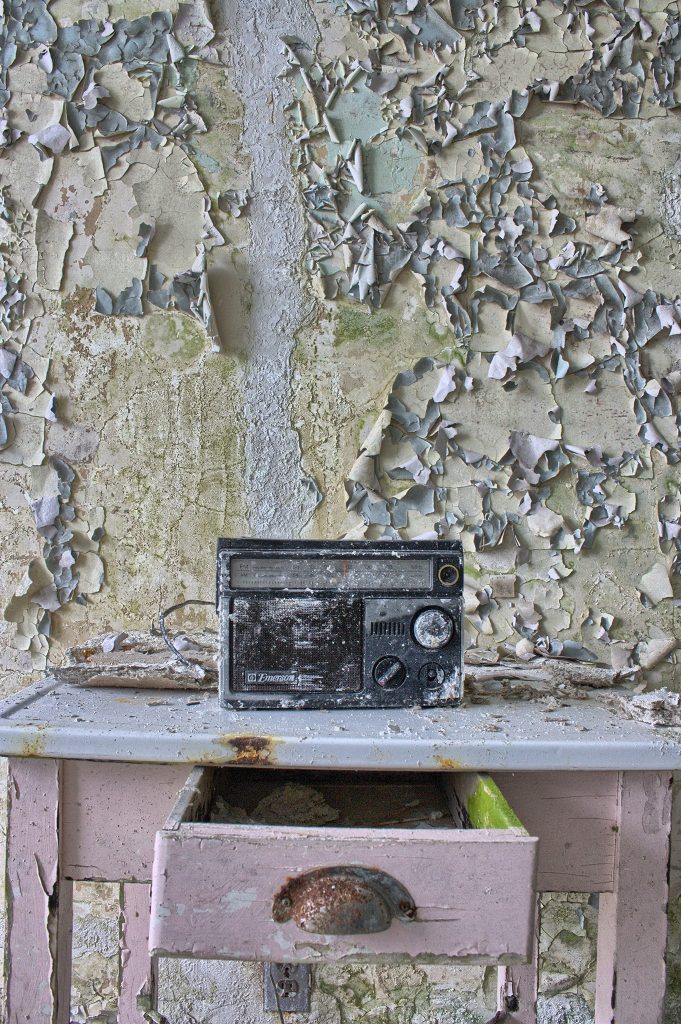

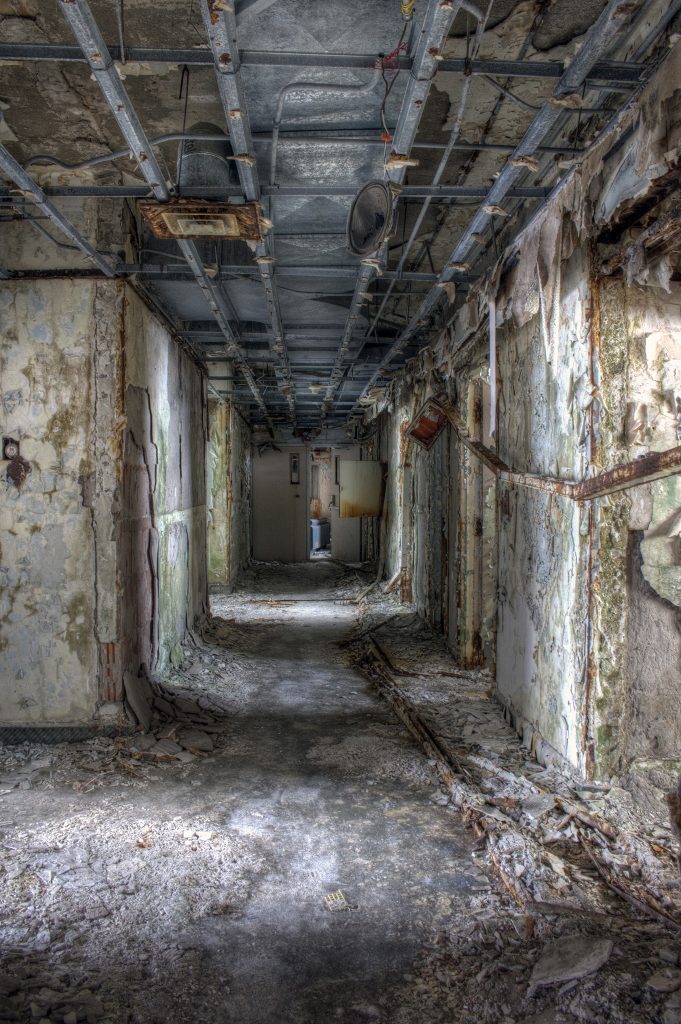
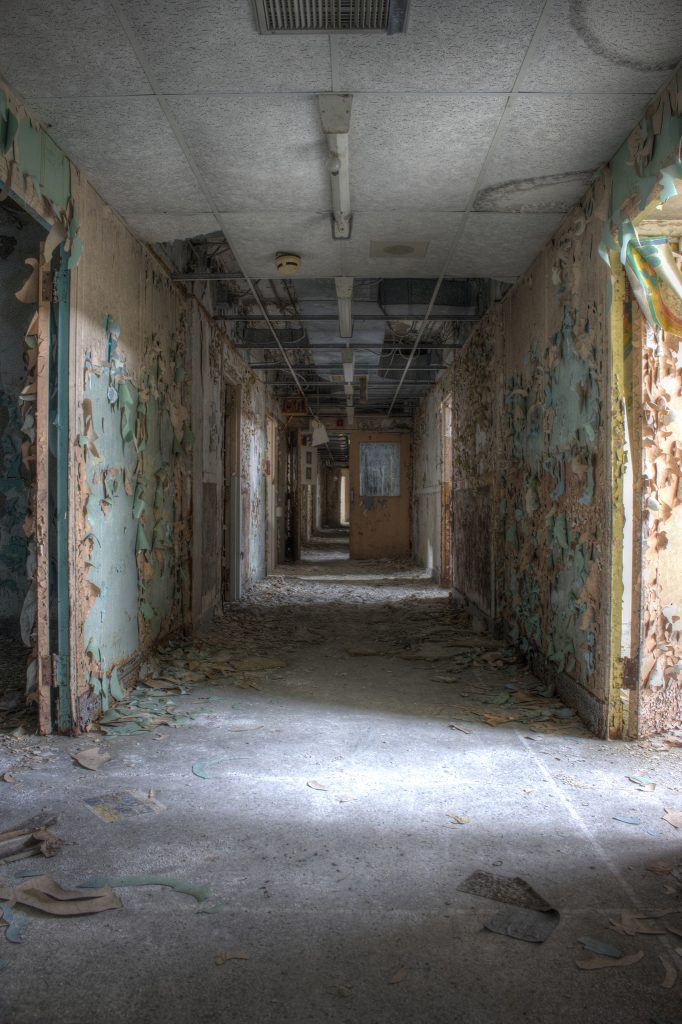
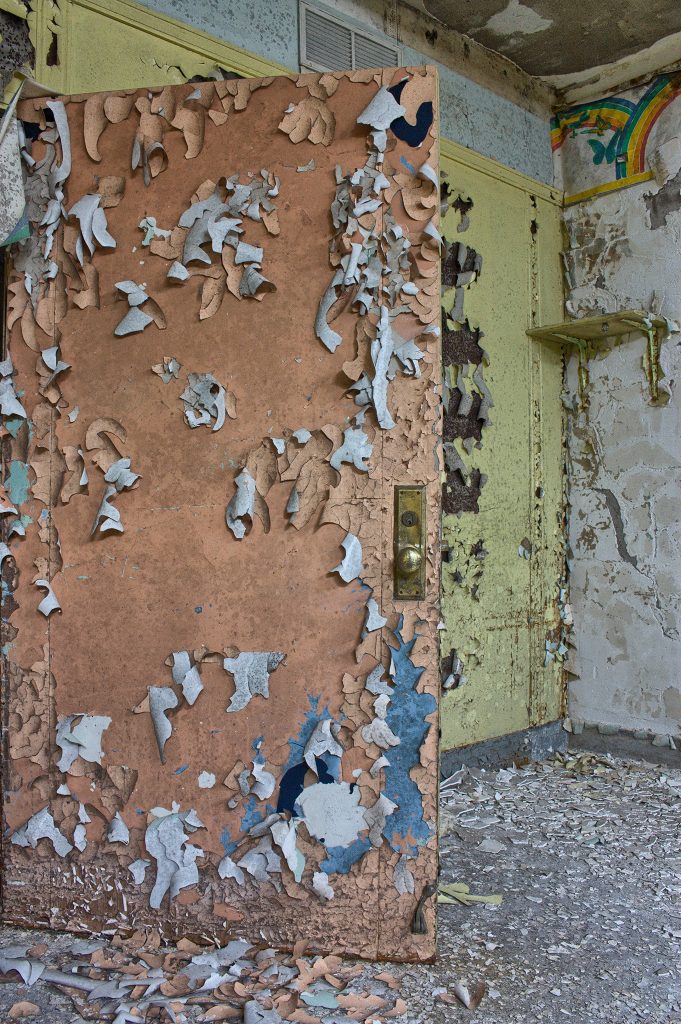
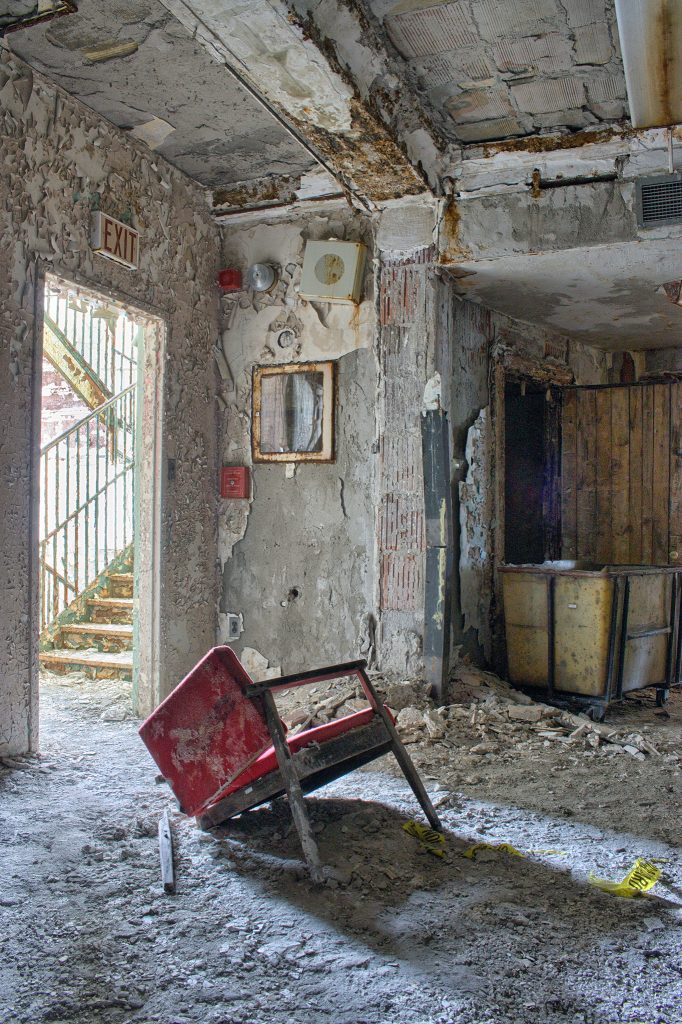
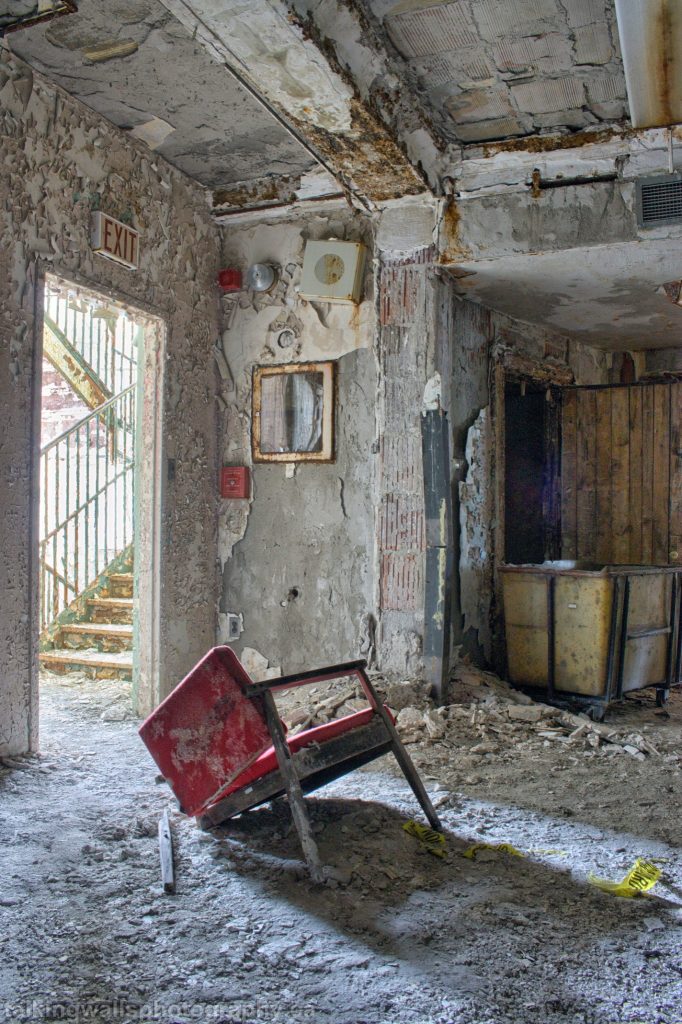

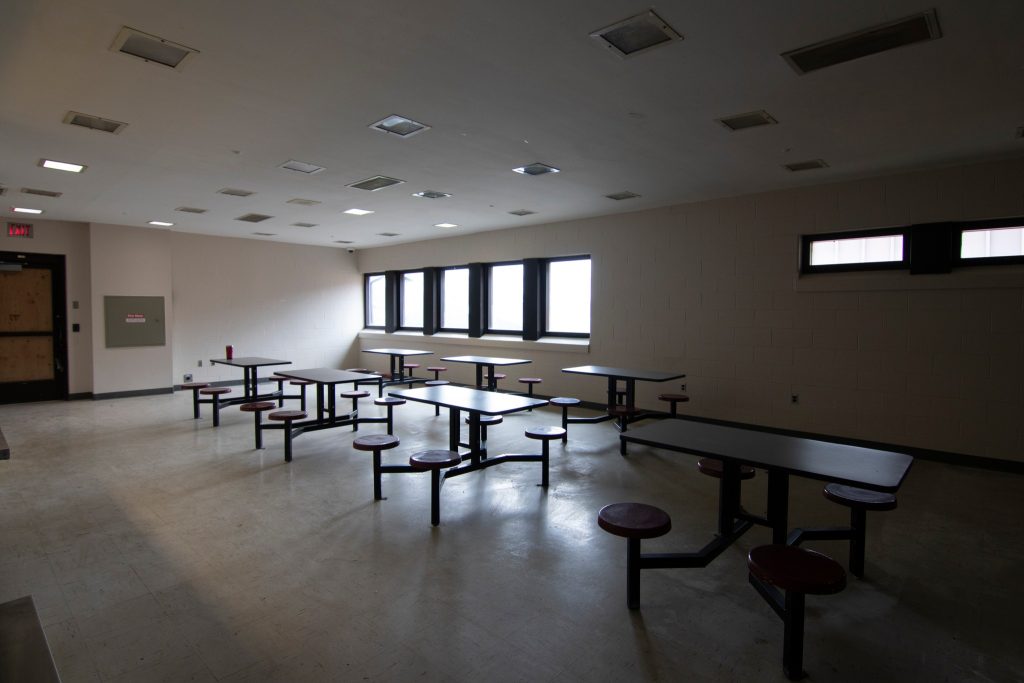
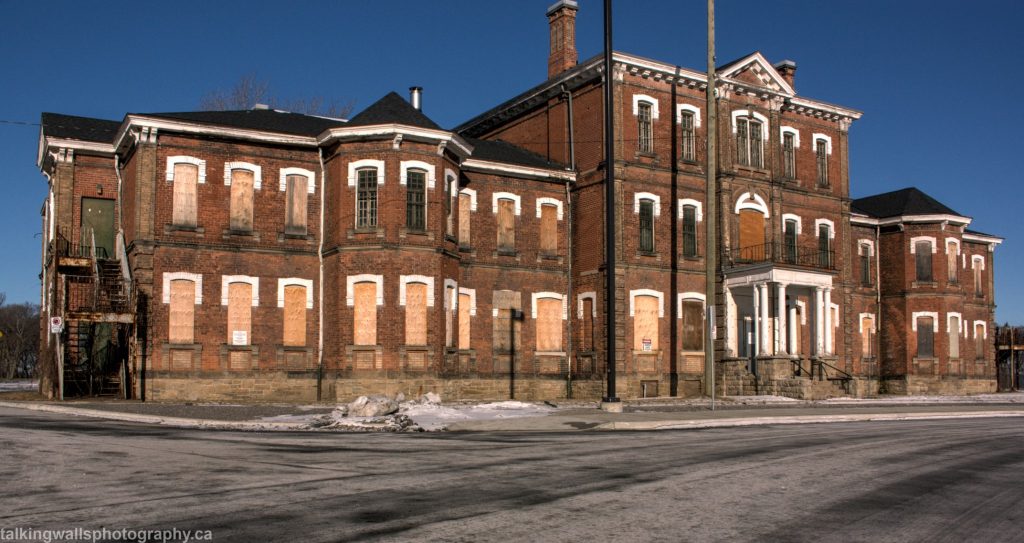
Hi again Michael
I couldn’t find an email address for you to let you know that I finished my rendition of the red chair photo. If you’d like to see what I did, drop me an email with your contact info…otherwise visit my blog tomorrow to see the finished product. I really enjoyed playing with your image and hope you like what I did! Thank you for giving me the opportunity.
Cheers
Mary Anne (marmic1954 AT gmail DOT com OR https://magpiesmumblings.blogspot.com)
You’re welcome, the quilt looks very nice.
Make sure you check my blog tomorrow so you can see it finished (post should be live by 9 am or so). What’s on my blog right now is a work-in-process.
MA
My mother was a patient here for four years in the 1940’s so I have some interest in the property. I’m a fabric artist specializing in abandoned buildings and vehicles and I would love to attempt to recreate the final picture in this grouping (the one with the red chair) if you would be willing to grant permission. I would, of course, give full credit to you as the photographer. If you’re interested in seeing some of my work, have a peek at my website and look for the ‘landscapes’ categories in my sidebar. Look forward to hearing from you.
Cheers
Mary Anne
Sure, let me know if you’d like a larger image to work with.
Thank you Michael! I hope my skills are up to the challenge of recreating this, but I’m anxious to try anyway. It might take me a little while to get to it because I have a couple I have lined up to do first, but I’ll let you know when I get it done. Thanks for the offer of a larger image but I can work with this one.
Cheers
Mary Anne
How is access now?
Not sure… usually a way inside if you’re determined.
its a shame our goverenment let these building deterioate to piont where they will need to be torn down. Opp were aloowed to camp there have weddings while local public ( tax payers were told you will be charged with trespass.
Once the lies are exposed peole will know.
Wow thanks so much for the photos and the description. I really enjoyed these photos. They left me wondering why such a place was built in a remote area and also how long it had been abandoned. Some of the photos made me wonder just how many decades this place had sat empty and now I know. I would’ve thought it had been empty much longer. A very unusual place, very nice to not see graffiti or intentional damage and these photos are just stunning. Thanks OAP!